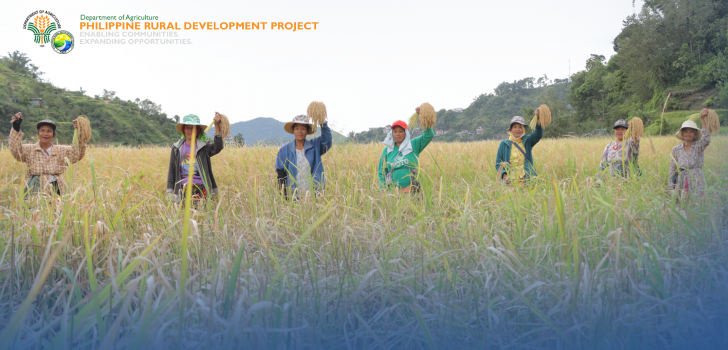
Rice is Life: Continuing the legacy of Ifugao’s heirloom rice
A legacy we need to protect and sustain—this is how Ana D. Habbiling, an 85-year-old farmer in Banaue, Ifugao, described heirloom rice as a cultural heritage.
“We have been planting the traditional palay ever since we were young. Our parents would always tell us that this rice variety was the only livelihood of our ancestors, and without it, we would not be who and where we are now,” Habbiling expressed.
Heirloom rice was created through centuries of cultivation and passed down through generations, hence its name.
For Habbiling, growing heirloom rice goes beyond being a means of livelihood, but a legacy left by her parents for them to sustain.
She shared that heirloom rice varieties have been grown mostly for home consumption and traditionally for social, cultural, and spiritual purposes. But since the exportation of heirloom rice was introduced to them some 18 years ago, they now only set aside a portion of their produce for family consumption and sell the rest.
Sustaining gains through enterprise development
Tinawon, which literally translates to “once a year” in Ifugao, are long-season varieties cultivated just once a year. These are grown using traditional farming practices without the aid of chemicals, which adds to its value and quality as an export commodity. As it exhibits exceptional nutritional value, an exquisite aroma, distinct taste, and unique texture, the demand is high for this variety both locally and internationally.
The exportation of heirloom rice started in 2005. This spurred the establishment of the Rice Terraces Farmers’ Cooperative (RTFC). They became a registered cooperative through the Cooperative Development Authority (CDA) a year later and became a certified organic rice producer through the Organic Certification of the Philippines (OCCP) in 2011.
Led and managed by Jimmy Lingayo, the RTFC serves as a ready market for the harvest and production of heirloom rice in Ifugao.
When they started their cooperative, Lingayo recalled that they only had 15 farmer-members until it gradually grew to more than 300 as they sustained the exportation of heirloom rice for more than a decade.
As they continued to grow while lacking a good processing facility, they were urged to propose an enterprise subproject under the Department of Agriculture – Philippine Rural Development Project (DA-PRDP).
In 2017, RTFC’s enterprise subproject on “Processing and Marketing of Export Quality Ifugao Heirloom Rice” was approved and four years later, it was finally turned over to them.
With the enterprise support from the DA-PRDP, Lingayo and the RTFC members now have a three-story processing center that can accommodate tons of heirloom rice produce, enough capital to buy heirloom rice palay from their members and pay them upfront, a truck to haul their members’ produce, and several processing equipment.
Currently, the RTFC markets around 1.2 to 1.5 tons of processed heirloom rice per month since starting implementation in 2021. They now have a total membership of 600 farmer-members.
“We are gating at a higher price, we are buying their palay at PhP90 to PhP100/kilogram, process it, and sell it for PhP130; and in return for supporting our coop’s business, we give them dividends and invite them to participate in trainings,” Lingayo said.
Aside from the buy and sell of heirloom rice, the co-op also provides services such as rice hulling and milling, microfinance loan, and food processing.
Located along the national highway in Amganad, Banaue, Ifugao, the processing center also serves as a one-stop-shop or Pasalubong Center where several local products produced by the members of RTFC and other farmer cooperatives and associations in Ifugao are displayed, aside from the co-op’s heirloom rice products.
To sustain their enterprise, the RTFC management continues to tap other agencies and institutions for training to improve heirloom rice productivity and encourage their members and other heirloom rice growers to plant the champion varieties that are highly marketable.
While the demand for these varieties is high both in local and international markets, reports show that heirloom rice production seems to have dropped due to several factors. Despite this, the RTFC’s management continues to encourage rice growers to maintain their organic way of rice production and plant champion varieties. They also encourage them to promote their products and source out other funding agencies for the rehabilitation of heirloom rice production areas.
Lingayo hopes that visitors would value and support Ifugao’s home-grown goods in addition to the beautiful scenery the province has to offer. ### Elvy T. Estacio
